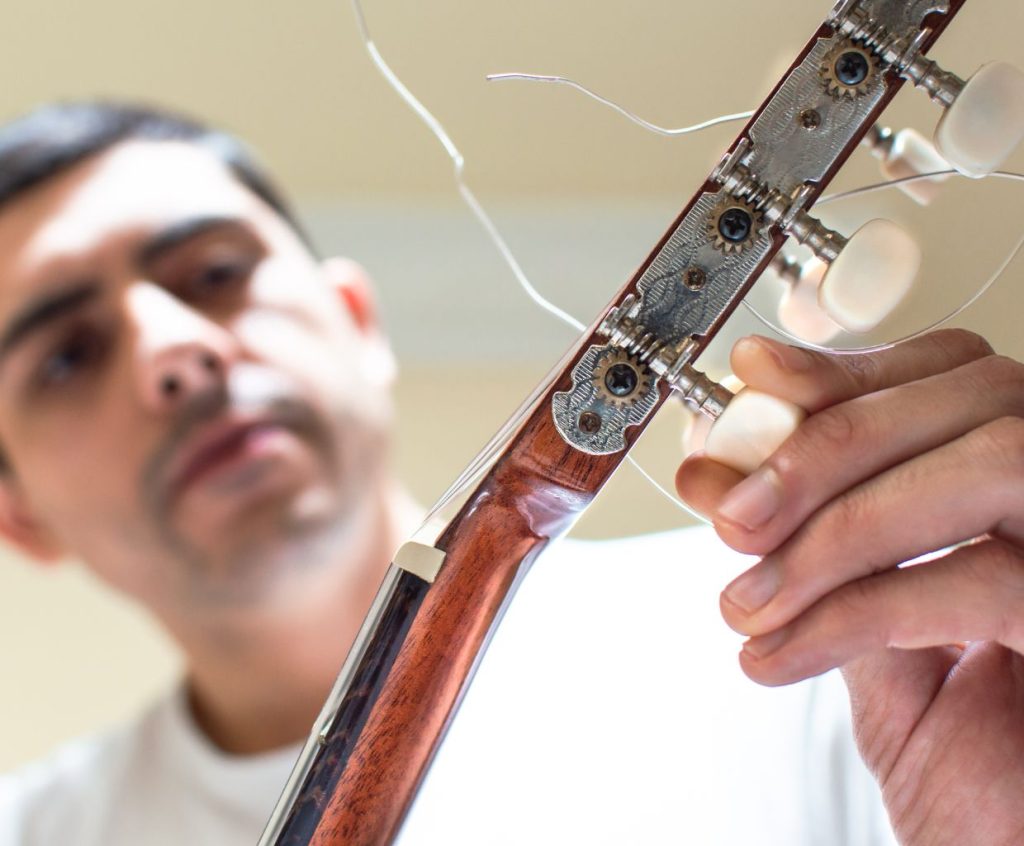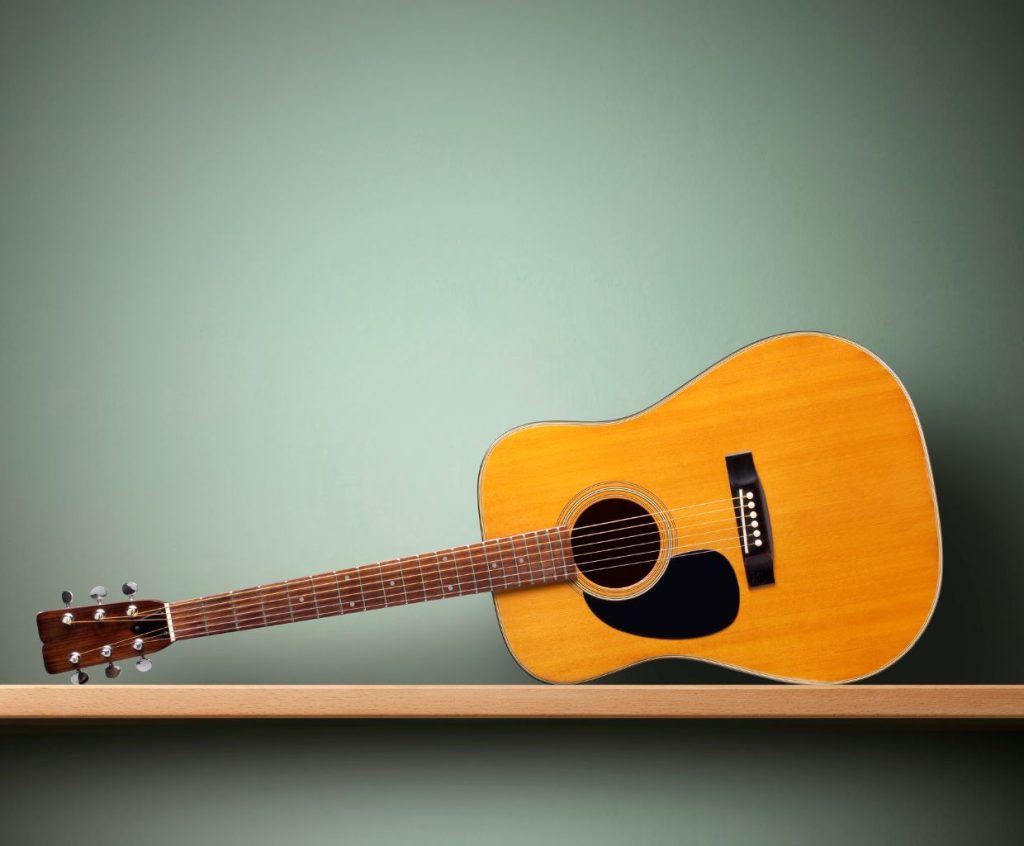Setting Guitar Intonation – Guitar Maintenance
Intonation is the process of adjusting the tension of the strings on your guitar so that they are in tune with each other. This means that when you play an open string, it should sound as if it’s in tune with itself.
To set the intonation on your guitar, you’ll need to turn one or more of the saddles (the metal piece that holds the string in place on the bridge) until all strings sound together. You may find that turning one saddle will cause one string to be sharp while another is flat, so you may need to adjust more than one saddle.
The most common way to do this is turning each saddle clockwise until all strings are in tune. You can also move them counterclockwise if you need to raise or lower certain strings. To do this, check your tuning and then use a flathead screwdriver to loosen the saddle. The goal is to move it just far enough so that you can slide it back and forth on its post (the protrusion of metal on which the saddle is mounted). Then retune your guitar and check again for intonation. If you’re still unsatisfied with the sound, repeat this process until it sounds right.
Table of Contents
How To Set Guitar Intonation
The guitar intonation must be as precise as possible. For that, the vibrant length of the string must be proportional to the scale length, the action, and the string caliber. Without a proper intonation, it’s impossible to reach precise and tuned notes along the fretboard. It’s important to check or change the strings and the nut, neck curve, and guitar dynamic height. Also, the frets must be in good shape. Most electric guitars allow you to intone each string individually.
You can turn your guitar intonation in a few different ways, so let’s look at them!
- If you have a bass guitar, you’ll want to tune your strings down to the lowest possible note. Then, you’ll want to set up your first string, so it sounds in tune with itself when it’s played open. (In other words, play the first string and make sure it sounds like itself.) Once you’ve done that, turn the tuning key counterclockwise until it sounds in tune again when played open.
- If you have an electric guitar with fixed bridge saddles (like most Fender-style guitars do), turn the tuning critically clockwise or counterclockwise until each string is in tune with itself when played open (as described above). If any of those notes are flat or sharp compared to the others after tuning, adjust accordingly. If you don’t have a tuning key, there are several methods of tuning that you can use instead. For example, if you have an electric guitar with floating bridge saddles (like many Gibson-style guitars), you can use the built-in tuners on your amp to tune them up. If not, try using a harmonica or singing each string in turn while playing it open.
Setting Guitar Intonation – Tuning
After tuning, you can compare the note you got while pressing the 12th fret. If it’s lower, you should make the string length shorter. If it’s higher, you should do the opposite. The adjustment must continue till both notes are the same.
An electronic tuner would be very helpful. If the note is lower, the tuner needle should be before “0”; if it’s higher, it would be after the “0”. Using your hearing, it’s better to use the harmonic on the 12th fret instead of the natural string note. Most acoustic guitars have an immovable bridge, so the intonation adjustments should be in the hands of a professional.
Which way do I move my saddle for Setting Guitar Intonation?
For guitar intonation, it is usually best to move the saddle in the same direction as you turn it. If you’re trying to tune a guitar and one string is sharp, try moving the saddle in the opposite direction of how it’s turning (clockwise). If another string is flat, then move the saddle in the same direction as how it’s turning (counter-clockwise).




